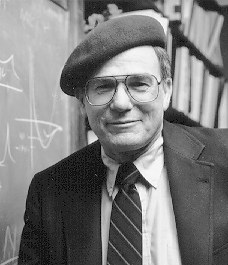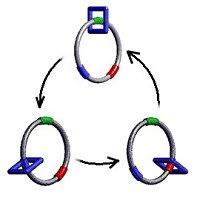The development of new energy-efficient and high-resolution full-colour displays for portable computing and communications applications, even flexible electronic paper, will rely on finding novel organic molecules that produce colour when a voltage is applied. Such molecules could ultimately lead to a whole new range of display devices that are currently not possible with conventional liquid crystal displays.
Now, Wei-Qiao Deng and William Goddard III of California Institute of Technology have used quantum mechanics based molecular modelling to design a molecule that changes between red, green, and blue, as an increasing voltage is applied. This three-colour molecule could circumvent the need to have three different molecules for each of the primary display colours by encompassing all three in a single unit and so reducing device complexity and ultimately cost. Fraser Stoddart and Amar Flood of the University of California at Los Angeles are in the process of synthesizing this molecule to test and optimize the performance of this system.

Fraser Stoddart
The design is based on the invention by Stoddart and his colleagues of interlocking ring-shaped molecules that can change properties with electrical control. In order to make a colour change molecule they interlocked two rings that could flip between two states. The resulting molecule is either green or red depending on the voltage. Adding a third colour is much more difficult and to accomplish this, the team turned to chemical computation to find the design that would achieve exactly the right colours and would progress through three colours as the voltage is ramped.
Goddard, Stoddart and their colleagues propose a new concept for the pixel component in what they call an E-PAD. The device would consist of a film of their single RGB dye compound, with areas of film controlled by the device electronics. The researchers suggest that compared with other systems, their approach would be much simpler because of the need for only one pixel unit. Moreover, the molecules could be embedded into simple polymer layers or even actual paper so that technology related to ink-jet printing could be used in manufacturing rather than sophisticated layering processes.

William A. Goddard, III
Achieving a design experimentally is normally an enormous task. However, by combining theory and experiment in the way the Caltech and UCLA scientists have done they can carry out rapid prototyping for the best design using the computer. The whole process is greatly simplified by starting with the computationally optimized system, Goddard explains. This technique, he adds, is likely to become a powerful method for developing new materials and systems.

A dye molecule cycles between red, green, and blue forms depending on the voltage (Adapted from Stoddart et al/ACS)
Further reading
J Am Chem Soc, 2005, in press
http://dx.doi.org/10.1021/ja0431298
Prof. William A. Goddard, III
http://www.wag.caltech.edu/home/wag/index.html